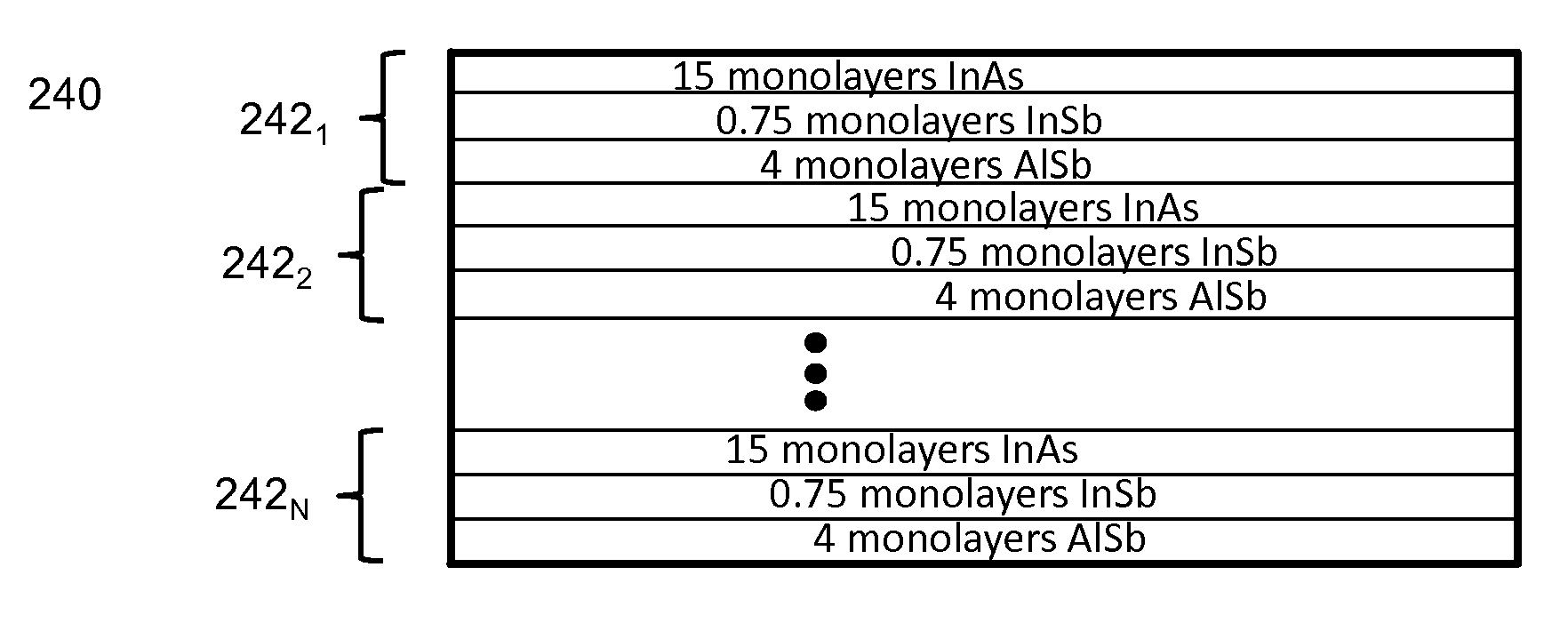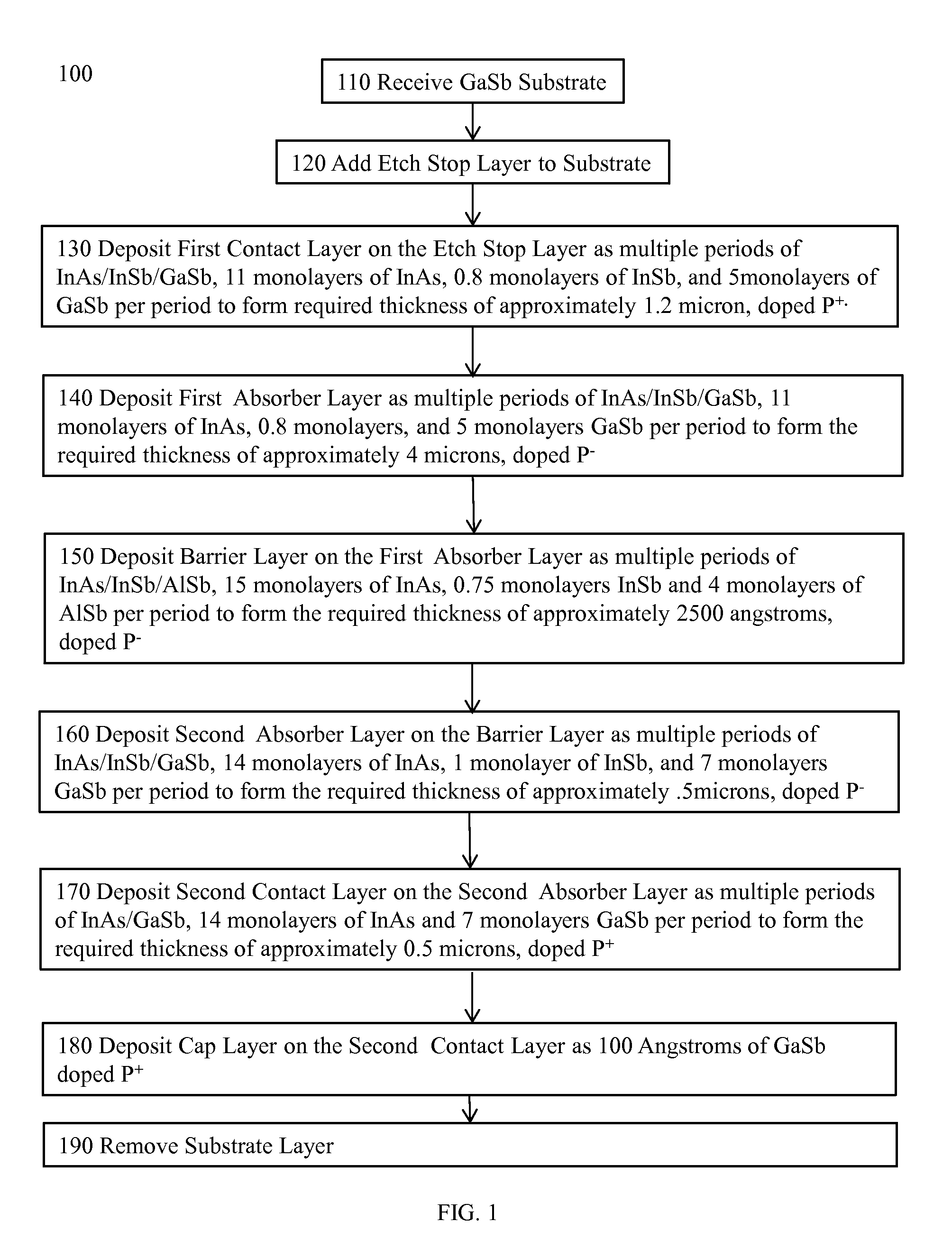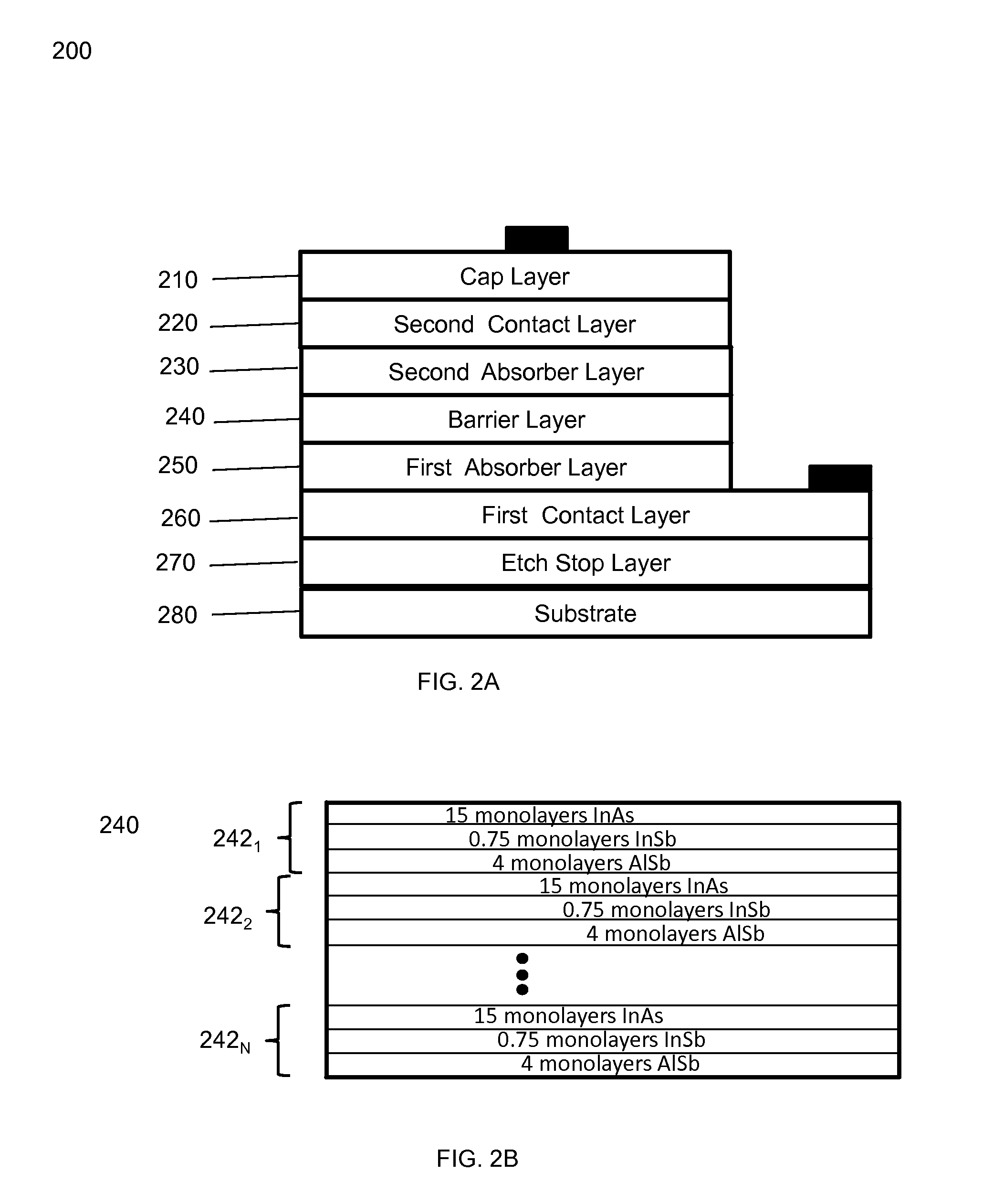Method of fabricating dual-band type-II superlattice detectors based on p-B-p design
a detector and superlattice technology, applied in the direction of sustainable manufacturing/processing, semiconductor devices, climate sustainability, etc., can solve the problems of inassb bulk materials that cannot be used in high-performance long-wave infra-red photodetectors, t2sls doped n-type will inevitably have limited quantum efficiency,
- Summary
- Abstract
- Description
- Claims
- Application Information
AI Technical Summary
Benefits of technology
Problems solved by technology
Method used
Image
Examples
Embodiment Construction
[0021]In the following detailed description, only certain exemplary embodiments of the present invention are shown and described, by way of illustration. As those skilled in the art would recognize, the described exemplary embodiments may be modified in various ways, all without departing from the spirit or scope of the principles of the present invention. Accordingly, the drawings and description are to be regarded as illustrative in nature, and not restrictive.
[0022]The problems described in the background section are at least partially solved by the principles of the present invention, including, by P type doping of a multiple layer barrier structure. The structure of an embodiment of the principles of the present invention uses a barrier structure comprising multiple layers, chosen to lattice match to the absorber layer above and below, and to present a transition in the conduction band from a first absorber layer to a second absorber layer across the barrier layer such that the...
PUM
 Login to View More
Login to View More Abstract
Description
Claims
Application Information
 Login to View More
Login to View More - R&D
- Intellectual Property
- Life Sciences
- Materials
- Tech Scout
- Unparalleled Data Quality
- Higher Quality Content
- 60% Fewer Hallucinations
Browse by: Latest US Patents, China's latest patents, Technical Efficacy Thesaurus, Application Domain, Technology Topic, Popular Technical Reports.
© 2025 PatSnap. All rights reserved.Legal|Privacy policy|Modern Slavery Act Transparency Statement|Sitemap|About US| Contact US: help@patsnap.com



